
How to Use A4988 Stepper Motor Driver Carrier: Examples, Pinouts, and Specs
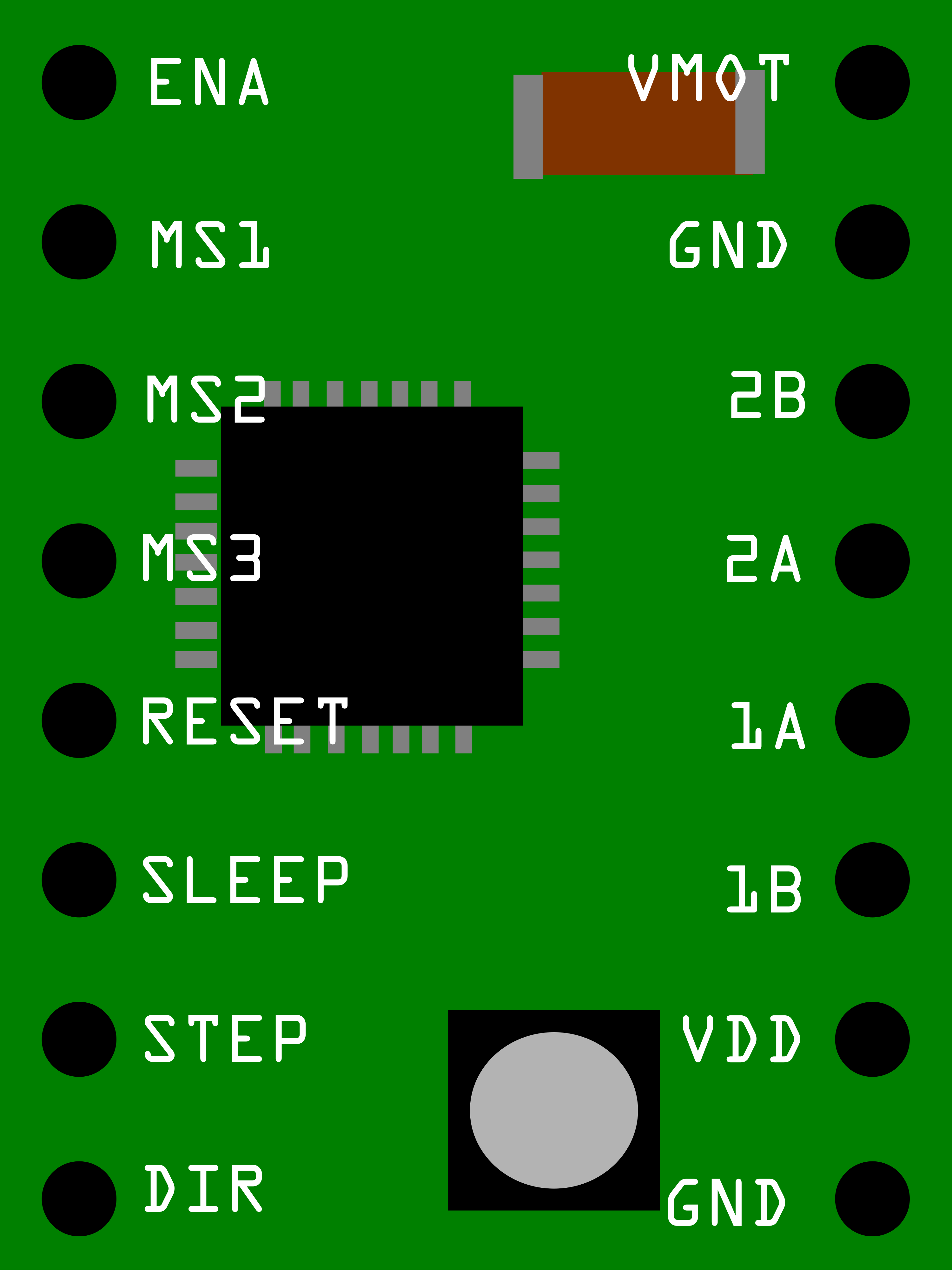
 Design with A4988 Stepper Motor Driver Carrier in Cirkit Designer
Design with A4988 Stepper Motor Driver Carrier in Cirkit DesignerIntroduction
The A4988 Stepper Motor Driver Carrier is a compact module designed to control bipolar stepper motors in full-, half-, quarter-, eighth-, and sixteenth-step modes. It operates with a logic voltage of 3-5.5V and can deliver up to approximately 1A per phase without a heat sink or forced air flow (it is rated for up to 2A per coil with sufficient additional cooling). This driver is an ideal choice for 3D printers, CNC machines, and other applications that require precise control of stepper motors.
Explore Projects Built with A4988 Stepper Motor Driver Carrier
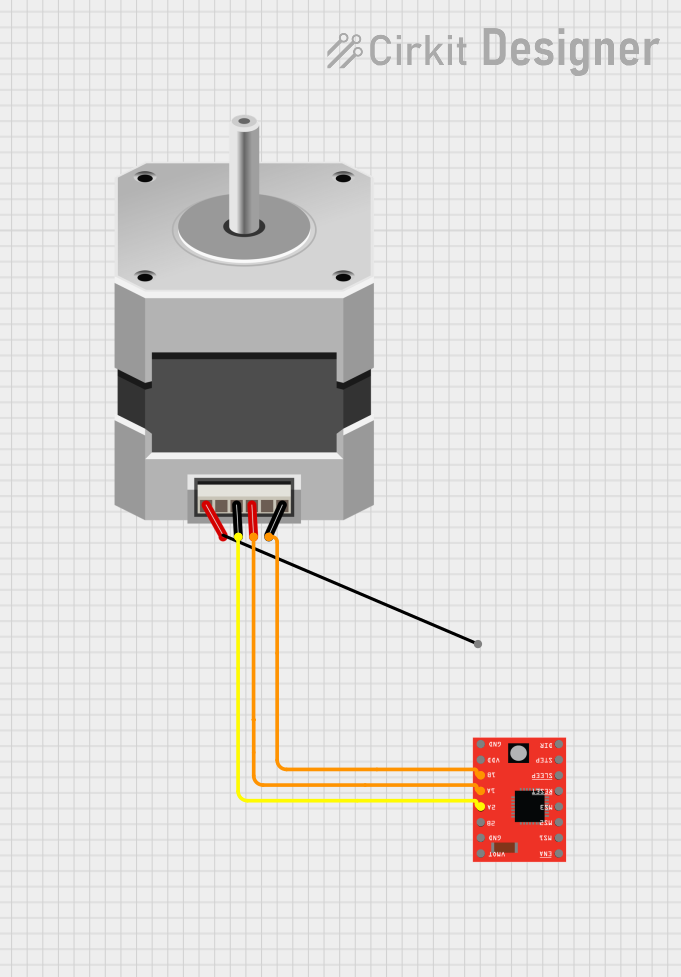
 Open Project in Cirkit Designer
Open Project in Cirkit Designer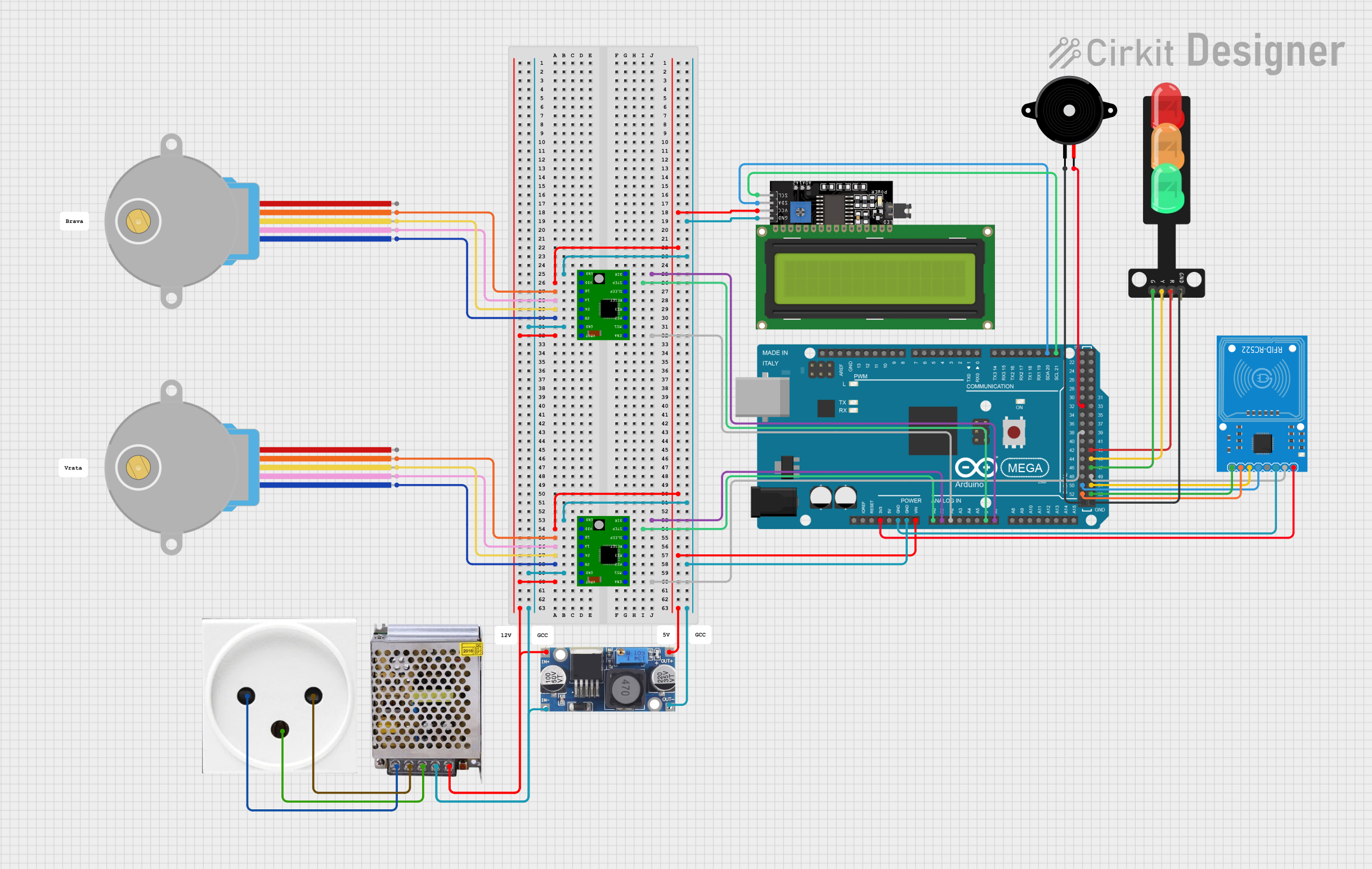
 Open Project in Cirkit Designer
Open Project in Cirkit Designer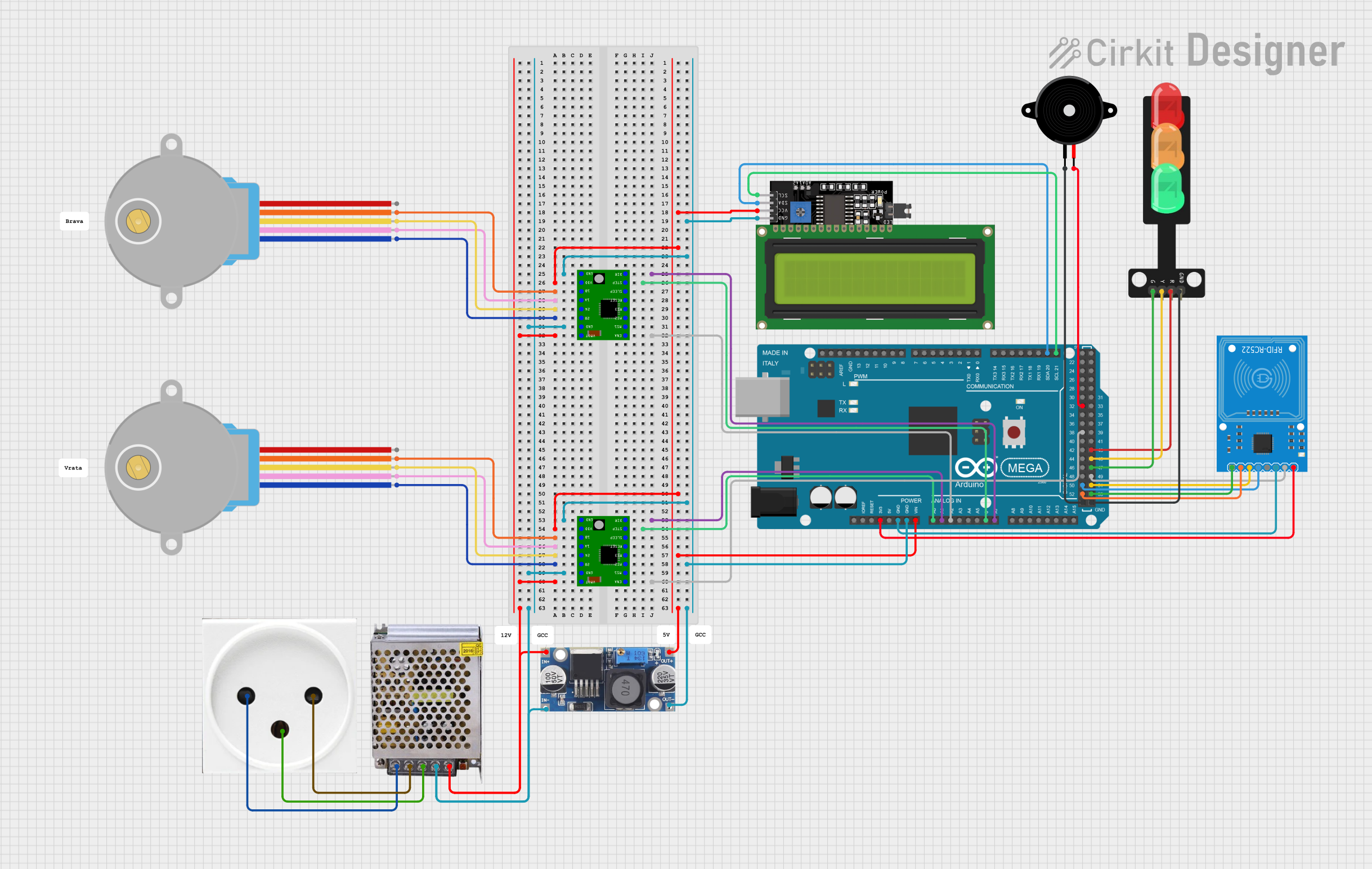
 Open Project in Cirkit Designer
Open Project in Cirkit Designer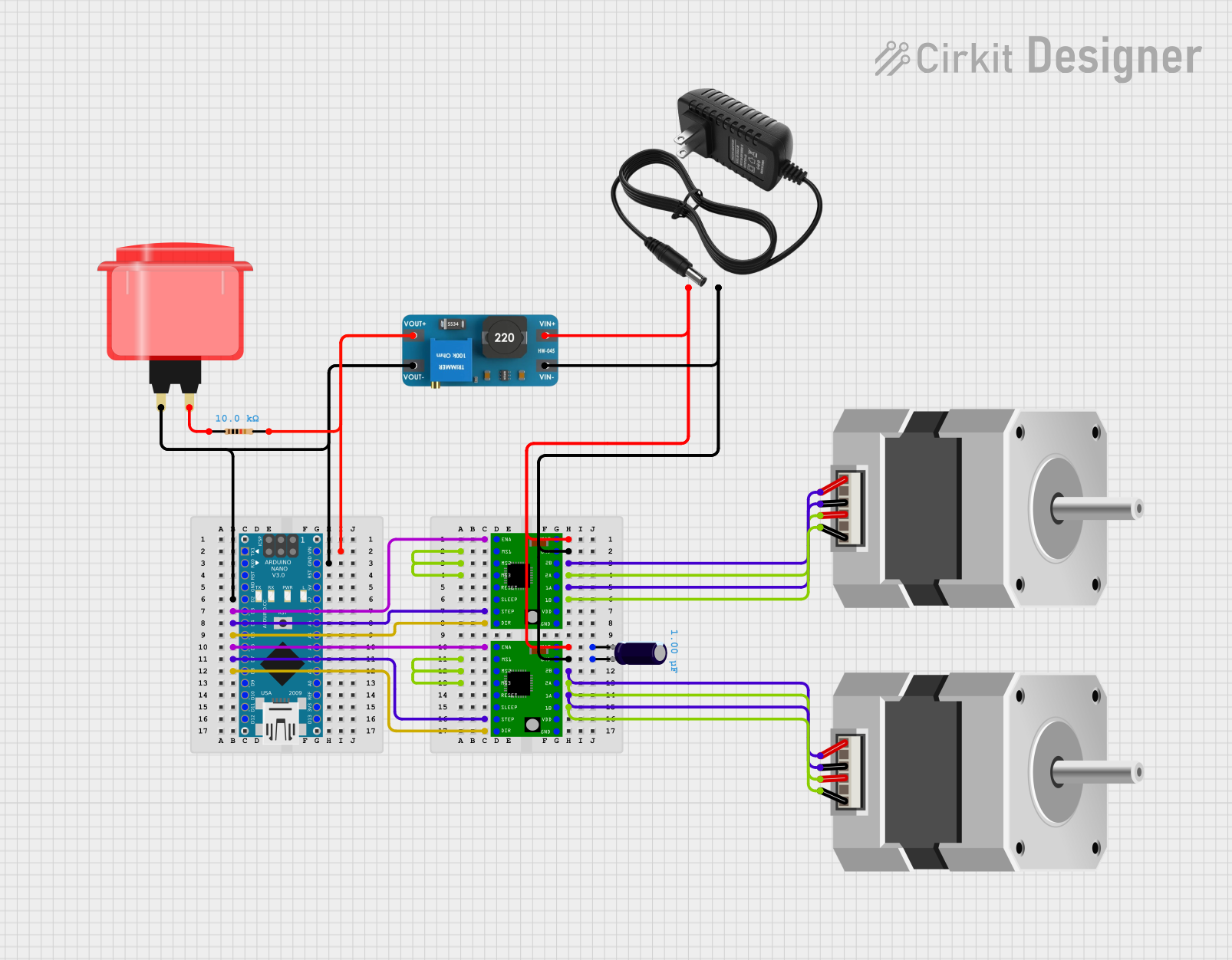
 Open Project in Cirkit Designer
Open Project in Cirkit DesignerExplore Projects Built with A4988 Stepper Motor Driver Carrier

 Open Project in Cirkit Designer
Open Project in Cirkit Designer
 Open Project in Cirkit Designer
Open Project in Cirkit Designer
 Open Project in Cirkit Designer
Open Project in Cirkit Designer
 Open Project in Cirkit Designer
Open Project in Cirkit DesignerCommon Applications
- 3D Printers
- CNC Machines
- Precise positioning and movement control in robotics
- Automated equipment and actuators
Technical Specifications
Key Technical Details
- Logic Voltage (VDD): 3-5.5 V
- Motor Supply Voltage (VMOT): 8-35 V
- Output Current: 1 A per phase without a heat sink, 2 A per phase with proper cooling
- Microstep Resolutions: Full, 1/2, 1/4, 1/8, 1/16
- Thermal Overload Protection: Yes
Pin Configuration and Descriptions
| Pin Number | Name | Description |
|---|---|---|
| 1 | VMOT | Motor supply voltage (8-35 V) |
| 2 | GND | Ground (0 V) |
| 3 | 2B | Motor coil 2 |
| 4 | 2A | Motor coil 2 |
| 5 | 1A | Motor coil 1 |
| 6 | 1B | Motor coil 1 |
| 7 | VDD | Logic supply voltage (3-5.5 V) |
| 8 | GND | Ground (0 V) for logic |
| 9 | STEP | Step input (pulses) |
| 10 | DIR | Direction input |
| 11 | MS1 | Microstep selection 1 |
| 12 | MS2 | Microstep selection 2 |
| 13 | MS3 | Microstep selection 3 |
| 14 | RESET | Resets the driver |
| 15 | SLEEP | Sleep mode enable |
| 16 | FAULT | Fault output (active low) |
| 17 | ENABLE | Enables the FET outputs |
Usage Instructions
Connecting to a Circuit
- Connect the motor's coils to the A4988 outputs (1A, 1B, 2A, 2B).
- Apply the motor supply voltage (VMOT) and ground (GND) to the respective pins.
- Connect VDD to a 3-5.5 V logic supply and ground the logic ground (GND).
- Connect the STEP and DIR pins to the controlling microcontroller or another control circuit.
- Set the desired microstepping resolution using the MS1, MS2, and MS3 pins.
- Optionally, connect the SLEEP, RESET, and ENABLE pins as required by your application.
Important Considerations and Best Practices
- Always ensure that the power supply matches the requirements of the motor and does not exceed the maximum voltage rating of the A4988.
- Use decoupling capacitors close to the board to minimize voltage spikes.
- Avoid disconnecting the motor while the driver is powered to prevent damage.
- Heat sinking is recommended when running the driver close to its maximum current rating.
- Microstepping resolution is set by the logic levels on MS1, MS2, and MS3. For example, driving all three pins low will set the driver to full step mode.
Example Code for Arduino UNO
// Define step and direction pins
#define DIR_PIN 2
#define STEP_PIN 3
void setup() {
pinMode(DIR_PIN, OUTPUT);
pinMode(STEP_PIN, OUTPUT);
}
void loop() {
digitalWrite(DIR_PIN, HIGH); // Set the direction
digitalWrite(STEP_PIN, HIGH); // Take one step
delay(1);
digitalWrite(STEP_PIN, LOW); // Complete the step
delay(1);
// Add more steps as needed
}
Troubleshooting and FAQs
Common Issues
- Motor not moving: Check connections, ensure power supply is adequate, and verify that the STEP and DIR pins are being driven correctly.
- Overheating: Ensure proper cooling, check current limiting settings, and verify that the motor specifications match the driver's capabilities.
- Inconsistent movement: Check for mechanical obstructions, verify microstep settings, and ensure that the step pulse timing meets the motor's requirements.
Solutions and Tips for Troubleshooting
- Double-check wiring, especially the motor coil connections and power supply.
- Use a multimeter to verify the voltage at VMOT and VDD.
- Ensure that the current limit is set correctly according to the motor's specifications.
- If the driver enters a fault state, check for short circuits or over-temperature conditions.
FAQs
Q: How do I set the current limit on the A4988? A: The current limit is set via the onboard potentiometer. Turn it while measuring the voltage on the REF pin or monitoring the motor current directly.
Q: Can I drive two motors with one A4988 driver? A: No, the A4988 is designed to drive one bipolar stepper motor. Driving two motors requires two separate drivers.
Q: What is the purpose of the SLEEP pin? A: The SLEEP pin puts the driver into a low-power sleep mode when pulled low, which can be useful for power-saving when the motor is not in use.
Q: How do I know if the driver is in a fault state? A: The FAULT pin will be driven low if there is a fault condition. This can be monitored with a microcontroller or an LED indicator.
This documentation provides a comprehensive guide to using the A4988 Stepper Motor Driver Carrier. For further details, consult the manufacturer's datasheet and resources.